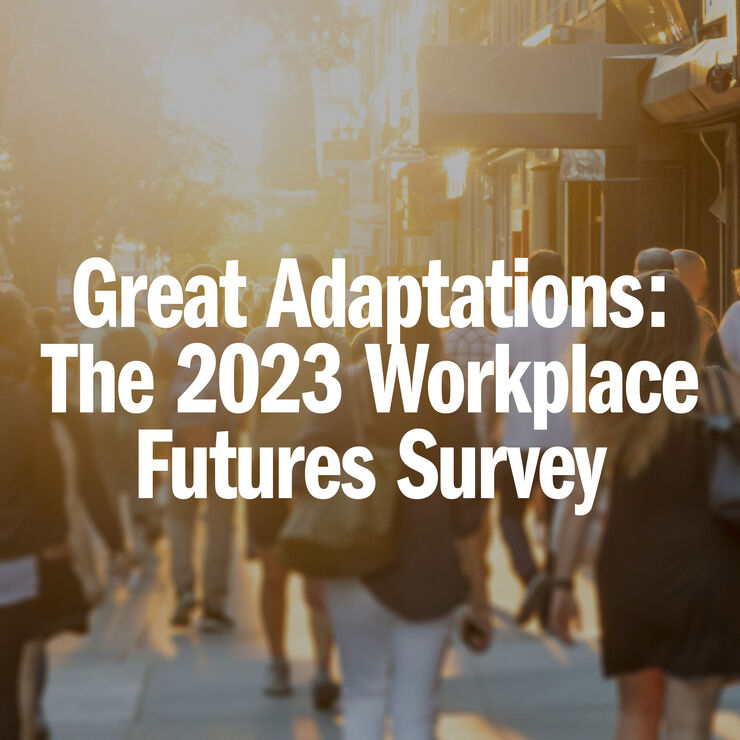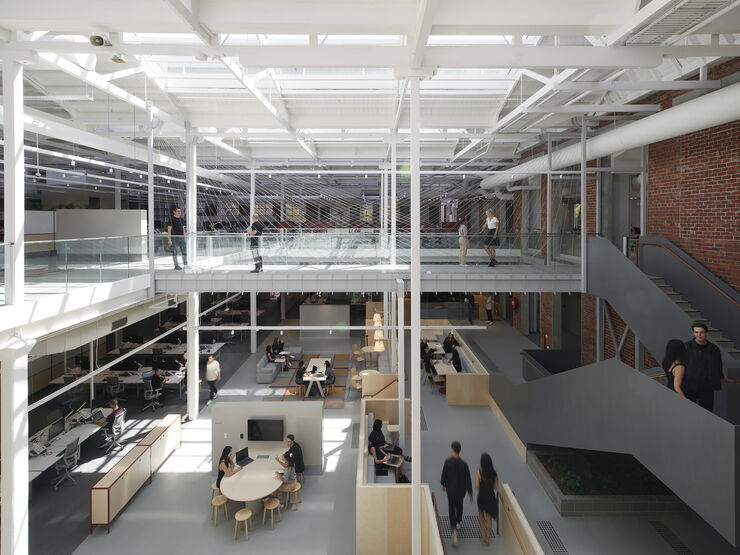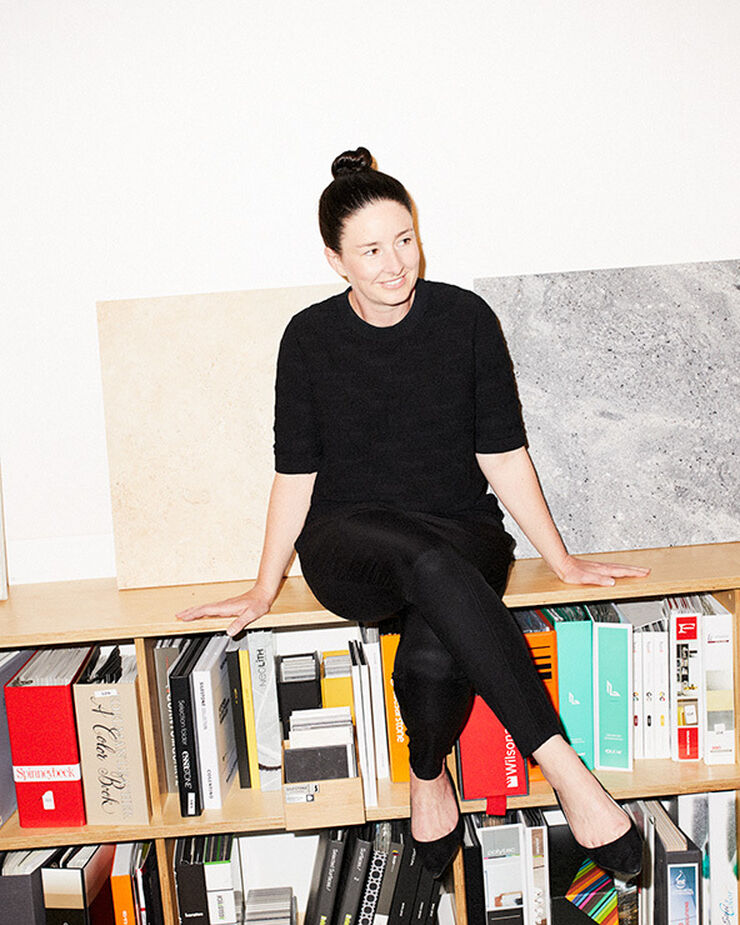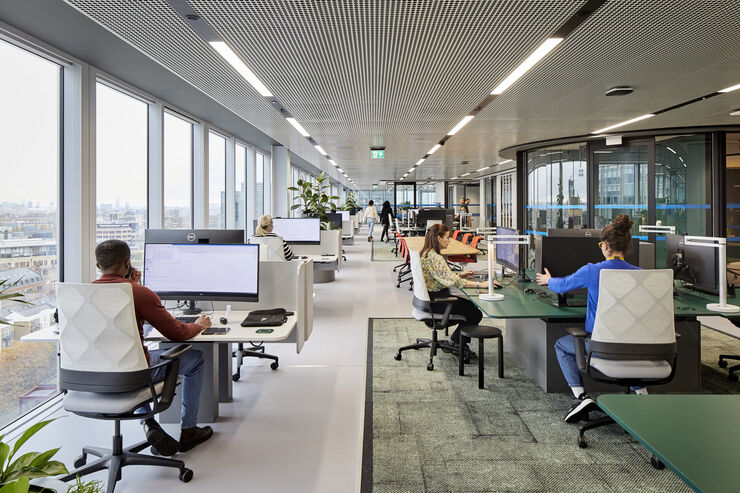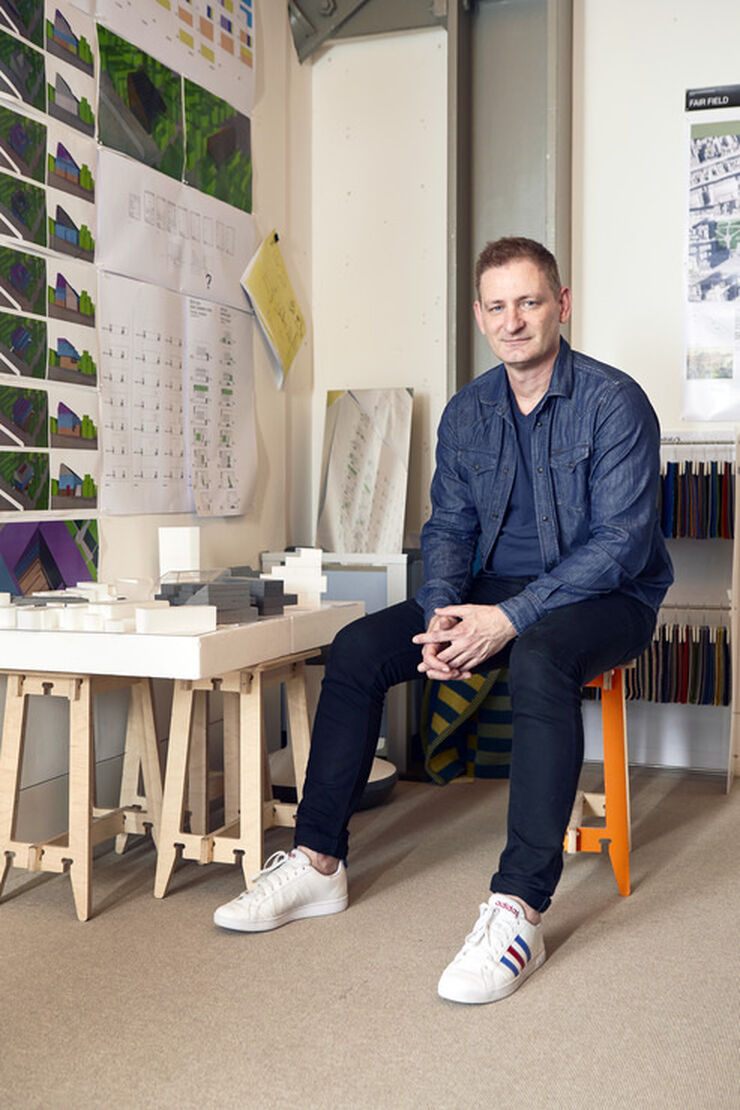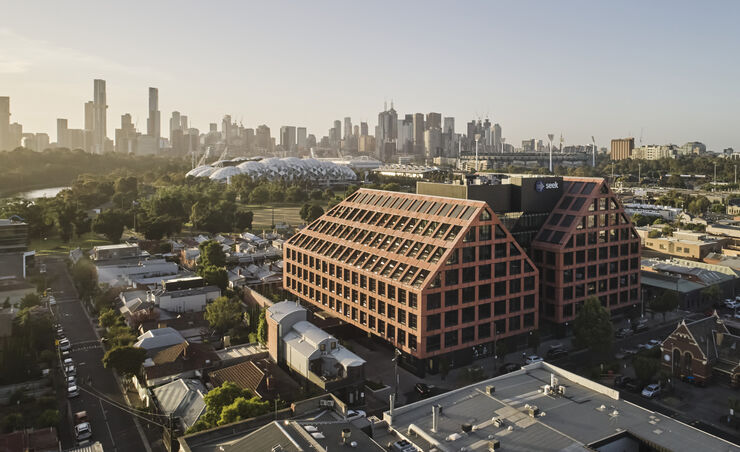Redefining workspaces: the rise of the desk-less office
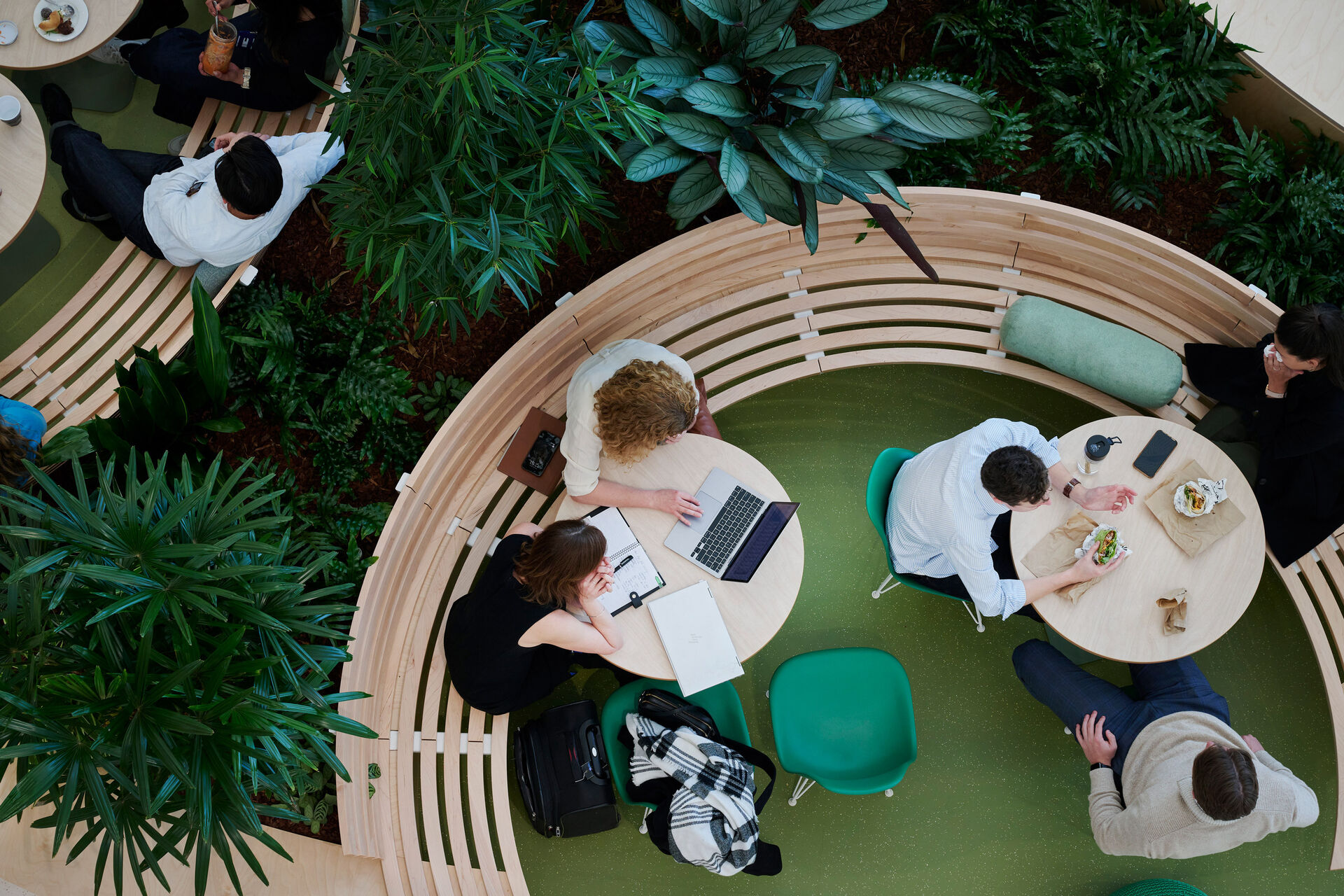
With remote work often preferred for desk-bound activities and office visits favoured for meetings, what does this mean for the future of the workplace? Welcome to the desk-less office.
By Daniel Davis, Head of Research
What’s the best place for reading emails, analysing documents, creating presentations or attending video calls? Once upon a time, the only answer would have been an ergonomic chair pulled up to a desk somewhere in an office. But when we survey people today, most say they’d rather do these tasks at home.
This presents an existential crisis for the traditional office. If the best place for desk-based work isn’t an office, then what exactly is an office for?
Early in the pandemic, I wrote an article for the Harvard Business Review looking at how workplaces were changing. Drawing on insight from Hassell’s strategy team, I speculated that some offices might become more like clubhouses – social hubs focused on collaboration, culture and creativity. We’d seen this in our research: while many people liked working from home, physical offices were still the preferred place for meetings, events and water-cooler moments.
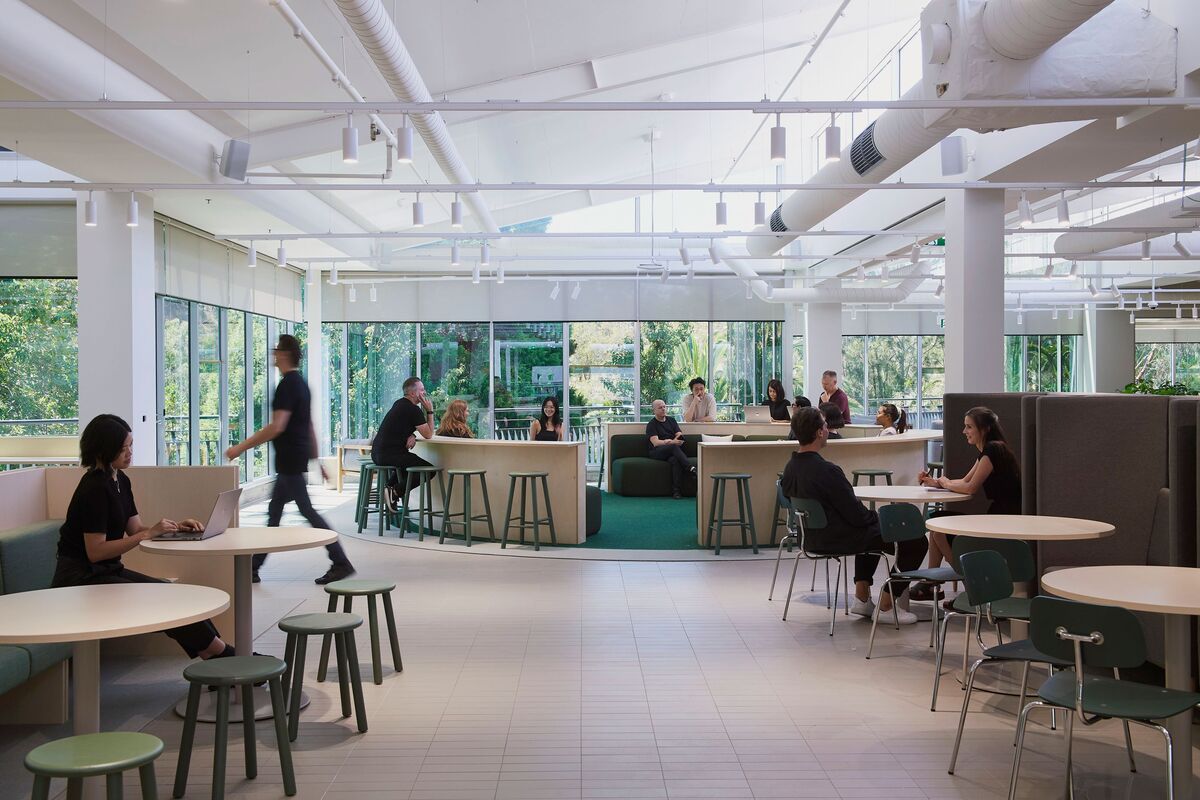
Fast forward a couple of years and the clubhouse is no longer a speculative idea. Clients are testing new workplace models and one client in particular, a government entity in Australia, has just finished their first clubhouse. Hassell designed the project in collaboration with the entity’s internal workplace strategy group. We’d never designed anything like this before the pandemic. For one thing, there are almost no desks. Instead, the office is full of lounges, event spaces, meeting rooms and cafes designed for collaboration. So how does this clubhouse work and what does it teach us about the future direction of post-pandemic workplaces?
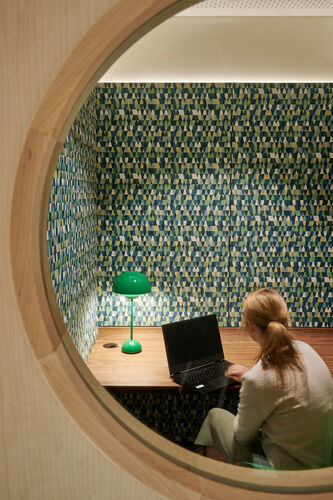
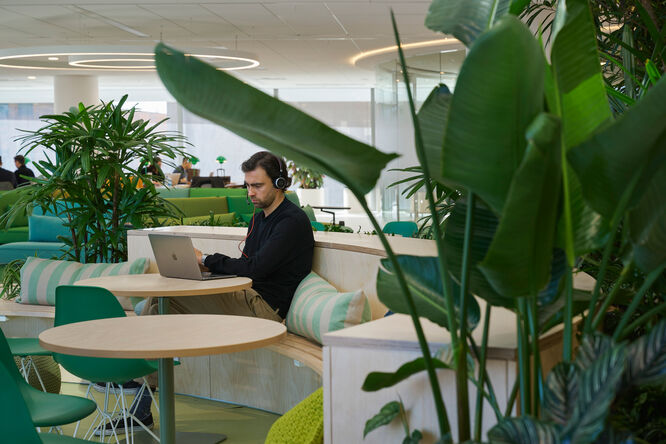
ONE ORGANISATION’S DESK-LESS OFFICE
Last year, the government entity approached Hassell with a challenge: they had many offices in Sydney and the surrounding area, but they had nowhere central for people to gather. Their workforce consisted of thousands of people in many different roles, ranging from high-vis workers to blue-collar, white-collar and technology workers. They wanted to create a new typology of workplace – a clubhouse – where everyone felt welcome, no matter which part of the organisation they were from. In other words, they wanted to create a place that would help connect all the employees and clients spread out across the state.
The entity’s geographic spread was partly due to its existing hub-and-spoke real estate strategy. The entity had several offices in suburban areas, which was great for those living nearby, but it also made collaboration tricky. If two people were in the office, they weren’t necessarily in the same location. They could be an hour or more apart. And there was no easy place for them to meet in the middle.
To help bring people together, the entity had chosen a new, central location for the ‘clubhouse’ - a space relatively accessible from anywhere in the region.
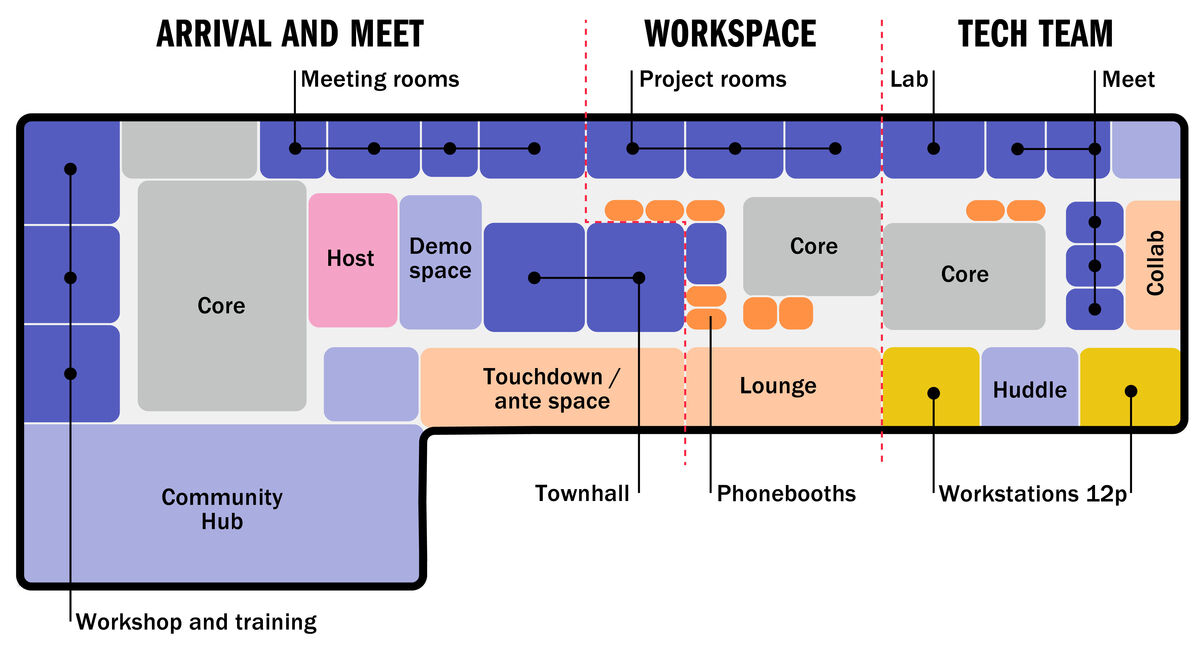
The entity took 2,400 sqm (26,000 sqft) in the new location across a single floor. Working from a brief created by the entity’s internal workplace strategy group, Hassell got to work designing the space. One key decision was to divide the floor plan into three distinct zones. The first area is for socialising, collaborating and meeting. It has a big event space, meeting and workshop rooms, lounges and a café. People from outside the organisation arrive here, are greeted by the concierge team, and are immediately immersed in a space that showcases the purpose, technology and products created by the organisation.
The middle feels like a private coworking space open to all the organisation’s employees. Accessed through a booking system, and full of sensors to measure occupancy patterns, it contains work lounges, meeting areas, drop-in working spaces, focus rooms for video calls and an 80-person immersive town hall space. If you need to meet a colleague from another office, you might arrange to meet them here. Or you might drop by if you need somewhere to base yourself for a couple of hours between meetings in the city.
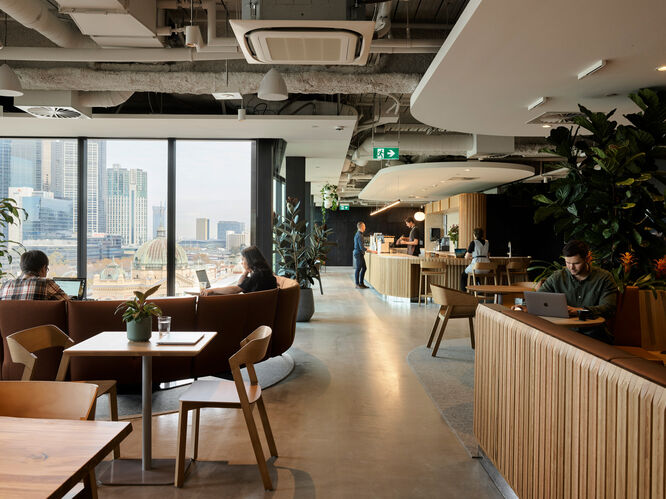
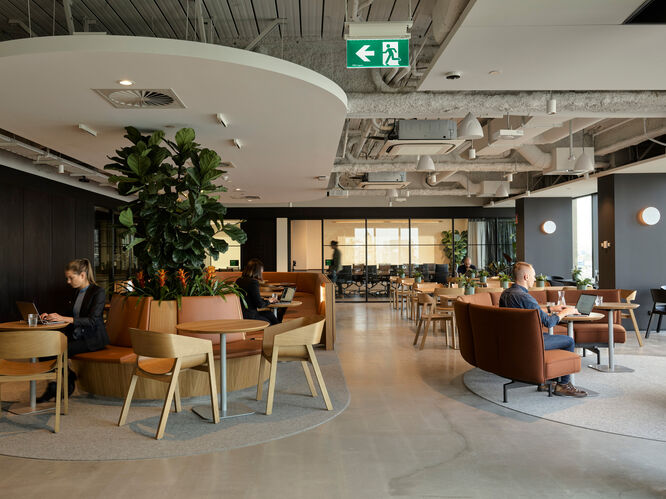
The final zone is dedicated to a specific team that functions as a tech startup within the entity. Unlike the rest of the building, this isn’t a drop-in area; it’s a permanent home for this team. The space is designed to fit their specific work patterns (which are quite different to the rest of the organisation and weren’t a good fit for existing workspaces). Their working area is at the far end of the floor and contains project rooms, places for specialist equipment, open and enclosed meeting areas, stand-up huddles and only 24 desks (these desks aren’t assigned to people, the team uses an activity-based workplace model).
These 24 desks are the only desks in the entire office. That’s not to say there’s nowhere for other people to sit and work. You can pull out a laptop and work in the café, take a phone call from one of the booths or send a few emails from a large, communal table with supportive chairs and built-in power in the work lounge. But in terms of desks with monitors and adjustable chairs that are designed to be sat in all day long, there are only 24 spots. It’s not quite a completely desk-less office, but it definitely has less desks than normal (typically you might have one workstation for every 10 or 15 m², this office has one for every 100 m²).
In some respects, this workplace isn’t that unusual. Many companies have meeting suites and client floors that are devoid of desks. But these meeting areas are always connected to a larger office full of workstations. What’s unusual here is that the meeting area is its own stand-alone workplace. This means employees essentially have three main places they can work: their home, their assigned office or this central clubhouse.

Effectively, this becomes activity-based working at the city scale. You can pick the location that best suits the work you’re currently doing. If you need to focus, you might choose to work from home. If you want to spend time with your team, you’ll probably head to your assigned office. And if you want to meet with a client or connect with someone in the wider organisation, you can spend the day in the clubhouse.
Providing this range of workplaces takes some of the strain off the entity’s older workplaces. Many of these offices were created well before the pandemic and were designed around the assumption that people would be there five days a week, working at dedicated desks. As work patterns have shifted, rather than undertaking a big renovation at each office to introduce more collaboration space, the clubhouse alleviates some of this pressure, giving everyone in the network more access to meeting spaces.
WHAT WE LEARNT CREATING A DESK-LESS OFFICE
Here are five pieces of advice for any organisation contemplating creating their own desk-less office:
1: Desk-less doesn’t mean chair-less
Although the clubhouse is geared around collaboration, you still need space for people to duck away and work by themselves. These don’t need to be formal settings. They can be high-back couches, kitchen or team tables and phone booths. But you need somewhere – it can’t all be collaboration space. This is because people’s schedules are messy, often switching between collaborative and individual tasks throughout the day, so workplaces still need to support both tasks. As an added bonus, these extra chairs provide overflow seating for busy days – the desk-less office referenced earlier can still accommodate 250 people productively.
2: Get the correct mix of spaces
Given that the desk-less office is a new typology, it can be difficult to work out the right quantity of space. How many meeting rooms do you need? How large should the kitchen be? How many focus rooms and phone booths are required? As a starting point, we’ve found that coworking spaces provide a useful template for kicking off the design. But the final mix will depend on the type of organisation, the type of work being done and the work styles of the users. As usual, there isn’t a one-size-fits-all solution.
3: Expect it to cost more
Here’s the truth: an open-plan work area is one of the cheapest workplaces you can build. It’s just desks and chairs. Things like meeting rooms are more expensive because they involve building doors and walls (good ones, with great acoustics), providing AV equipment, additional joinery and furniture, room booking panels, sensors and installing additional lighting, fire sprinklers and air conditioning. So an office with fewer desks and more rooms will likely cost more per square metre than a regular open-plan workplace. This needs to be considered early in the process to ensure there’s sufficient budget to meet the brief.
4: The arrival sequence is critical
The clubhouse will attract a lot of visitors. Some will be regulars; others might only stay for an afternoon. With so many new guests, the arrival sequence is especially important. This includes considering everything from how people find out about the space to how they reserve a spot and how they are greeted and welcomed in. While hospitality is important in all workplaces, it’s doubly important here, with the space’s design, technology and service offerings needing to align to create a seamless experience.
5: The desk isn’t the measure of workplaces anymore
For decades, almost every person that worked in an office was allocated their own desk. The desk became a key unit of measurement. Want to know how large an office is? Count the number of desks. Want to know the office’s density? Divide the total area by the desks. But these measurements are less useful in a post-pandemic world where hybrid working is becoming the norm. With more people working from desks in their houses (or third spaces, business lounges and coworking venues), the composition of what goes into offices is changing.

The desk-less office might be an extreme example, but over the past 20 years of measuring workplaces, we have seen a steady increase in the amount of collaboration space that companies are putting into their workplaces, and a corresponding decline in the number of task chairs. The pandemic has only accelerated that trend. The clubhouse is an extreme example and won’t be suitable for every company. But as organisations rethink their workplaces to meet the reality of hybrid working, we believe we will continue to see significantly more collaborative space and fewer desks as time passes.


Scan this QR code with your phone to follow Hassell on WeChat.
